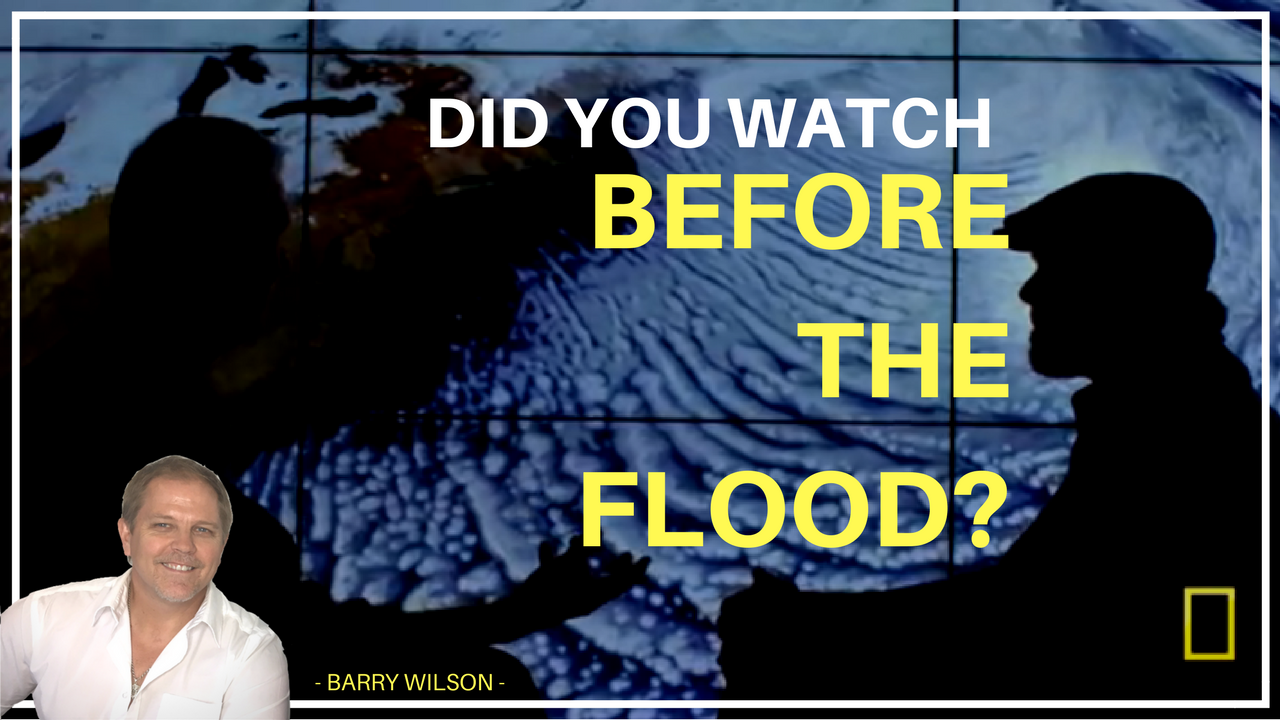
Did You Watch Before The Flood?
Nov 07, 2016“The most powerful person in the world is the storyteller. The storyteller sets the vision, values and agenda of an entire generation that is to come.” – Steve Jobs
Did you watch Before The Flood? You should – don’t rely on the pundits to tell you what to think about it – evaluate the message for yourself. And do yourself a favour and leave your “position” on climate change at the door for 90 minutes.
Leonardo DiCaprio uses story telling to convey his message that climate change is something we should all be taking seriously. Using powerful visuals, the movie shares some of the less desirable cause // effect relationships between humans and the Earth through the industrial age. It goes on to describe the “Business As Usual” scenario for the future – that is, if we keep doing what we’ve been doing, then we should expect some very unpleasant outcomes.
Most importantly, the movie (story) doesn’t end with a doomsday prediction.
Instead, DiCaprio sheds light on an alternative scenario (story) he calls “The Solutions” that suggest we can alter our course and reach a better future. He offers strategies like 100% renewable energy by 2050, subnational Government regional leadership, forest conservation and restoration, climate adaptation, business innovation, climate education, energy efficiency, urban resiliency, carbon pricing, ocean conservation, clean transportation systems, waste reduction, and implementing the Paris Agreement as a means to writing a better ending story.
The art of strategizing within a scenario planning framework is a lot like storytelling. By weaving together scientific methods of quantitative analysis with often less tangible but equally important social objectives, scenarios (stories) are carefully crafted to link certainties and uncertainties about the future to the decisions that must be made today. This process enables us to describe a future worth creating – and then to reap the rewards of preparing for it and making it happen. The approach is very powerful when a group of people are able to gain a shared understanding of the full suite of diverse values desired and the cause / effect relationships between them.

But describing all of the simultaneous interactions in a watershed, let alone the planet, and accounting for their combined cumulative effects on important values measured across the triple bottom line can be an incredibly daunting task. However, the development of new cutting edge tools and technology is enabling collaborative and iterative planning at this level of detail.
If you watched the movie, you got to see the visualization ocean flow using NASA’s (ECCO2) simulator. Watching these simulations we can very quickly synthesize terrabytes of data and ponder cause & effect. According to Paul King, a Computational Neuroscientist and Director of Data Science at Quora, vision is the most well developed sense in humans. As he points out, some estimate that as much as 2/3’s of the cerebral cortex is “involved” in vision. The second most developed sense is the auditory or sound. No wonder we love movies!!

Using visual simulators like this allows us to connect our cognitive reasoning with our most well developed senses – allowing us to invoke another uniquely human capability – the ability to imagine our future. In my work as a Systems Ecologist, I use simulation tools like the ALCES model to help my clients take advantage of land-use simulation, geospatial data analysis and integration, and data visualization to understand key drivers of change in their landscape and explore virtual what-if scenarios for the future collaboratively.
In planning for our future, it is no longer enough to look at one individual land use in isolation. We need to examine the cumulative effects of all the different land uses together. And we need to understand what actions move us closer to our desired future – and those that do not. And in the process of describing our future, we need to have the ability to consider a range of options and growth plans, consider all land uses as well as mother nature and measure performance across the new benchmark – the triple bottom line of people, planet and prosperity. Doing this will allow us to converge the collective thinking of many perspectives and create synergies where innovative solutions can and will emerge. We will be able to develop resilience frameworks that build on historical lessons and use them as roadmaps that minimize our risk and vulnerability to uncertainty with new global forces like climate change and world economies.
If you would like to learn more about the ALCES simulators and how they could help your work, please message me and I’ll be happy to share with you.

